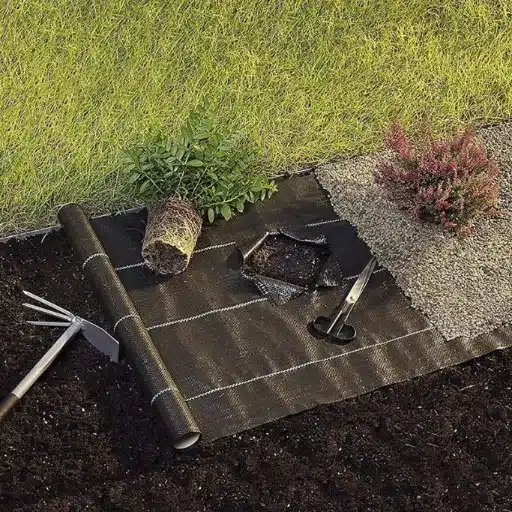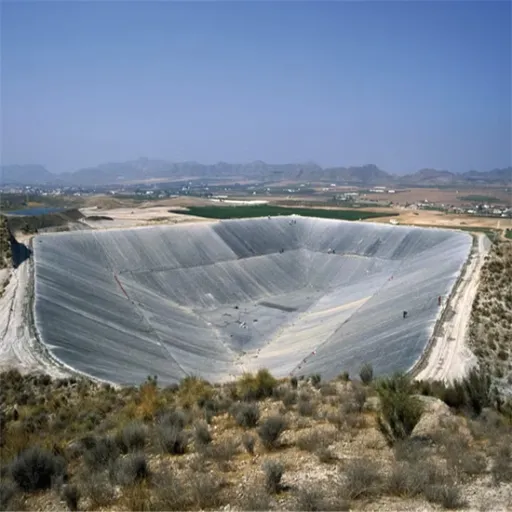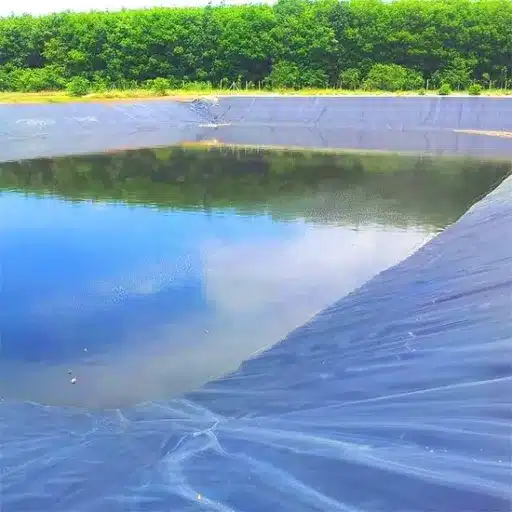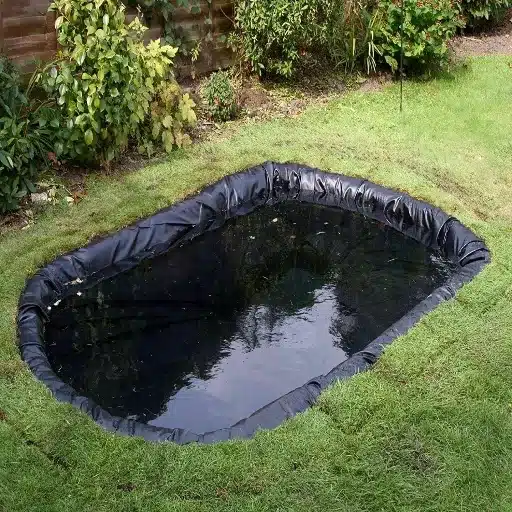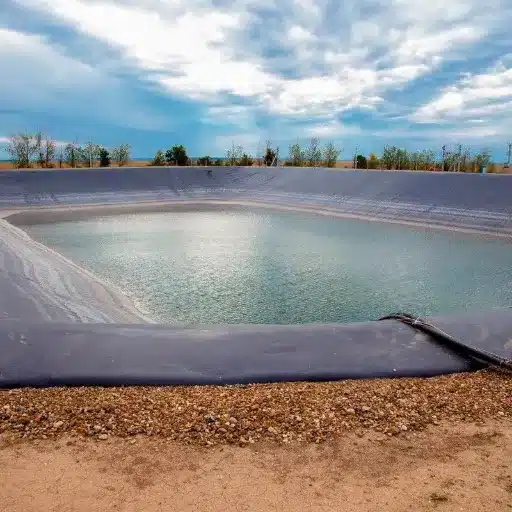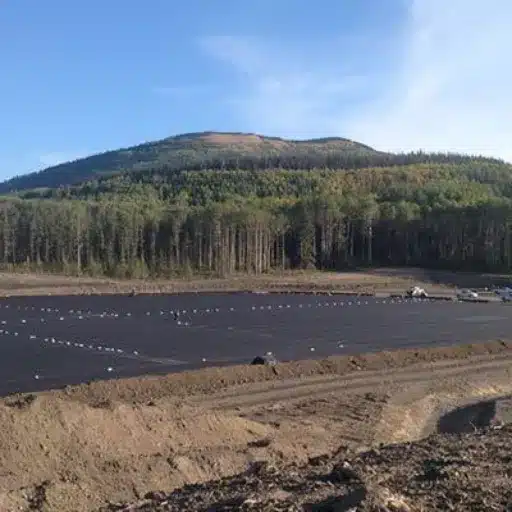Weeds seem to be among the highly persistent challenges that need to be confronted in order to maintain a pristine landscape or thriving garden. Whether you are an expert gardener or a hardcore DIY enthusiast, an only-win solution to keep unwanted invasive weeds at bay without harm to the plants must be found. And this is where weed barrier fabric profits you. This article will teach you everything you need to know about weed barrier fabrics so you can choose the very best one for your outdoor areas. From exploring the best options to defining an understanding of how essential these fabrics prove in weed control, we will help you come to an informed decision to keep the landscape beautiful yet low maintenance.
Understanding Weed Barriers
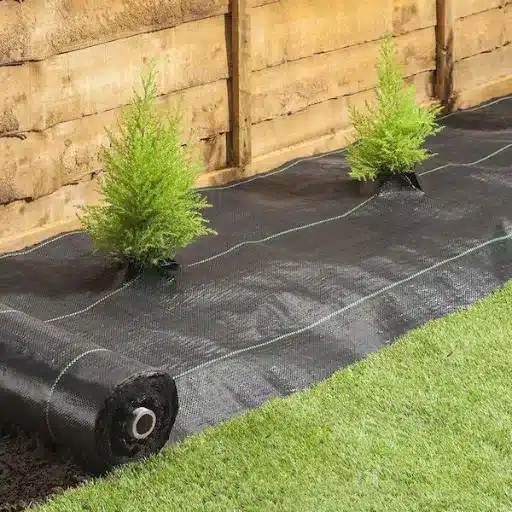
The weed barrier fabric becomes an intermediate treatment used to keep your outdoor spaces free from weeds without resorting much to chemicals. This mechanism blocks sunlight, preventing germination, yet still allowing rain and fertilizers to pass through to nourish the land. Appropriate fabric becomes one of my saving graces in ensuring an effortlessly healthy landscape with little maintenance.
What Is a Weed Barrier?
It is a special type of material meant to keep weeds from growing by blocking sunlight or limiting their resource access. As materials for manufacturing, such fabrics mostly consist of polypropylene or polyester, among others if sewn together. It will allow the passage of water and air into the soil below, thus maintaining the soil quality while restricting weed competition against plants desirable.
Types of Modern Weed Barriers:
- Woven fabric: Known to withstand heavy foot traffic and usually considered for sites and projects meant for the long haul
- Non-woven types: Best suited for decorative beds and low movement areas
- Perforated varieties: Depending on specific landscaping needs
Gardening and Why Weed Control
Weed control is often deemed necessary to nurture healthy garden crops. Weeds, thus, compete with the desired plants for precious resources such as sunlight, nutrients, and water and thereby may curb growth or possibly cause their decline. Modern-day studies of agriculture have suggested that if not managed, weed infestations may culminate in about 60-80 percent loss in crop yields, thus stressing the importance of having weed management applied.
Impact Statistics
- 📊 60-80% crop yield loss without management
- 📉 20% property value decrease from weeds
- 📈 85% weed reduction with proper control
Additional Concerns
Some ugly weeds potent in enticing pests and pathogens may then be transmitted to the surrounding plants if put under scrutiny. Additionally, ungoverned weeds may consequently alter soil composition by drawing away necessary nutrients; hence, subversively threatening long-term soil fertility.
These days, several studies indicate that aggressive weeds such as crabgrass or field bindweed dramatically depress the aesthetic value of gardens, even to the extent of property discounting by 20%. Proper methods of weed control, like the application of weed barriers alongside mulching and good weed removal, have been found to reduce weed presence by almost 85%. Through these means, organic methods of cover cropping or natural herbicides promote the establishment of a balanced ecosystem and healthy garden. Much of the knowledge on weed control put one in a good position to better manage their garden and embrace a more sustainable and eco-friendly approach to horticulture.
Top Factors to Consider When Choosing a Weed Barrier
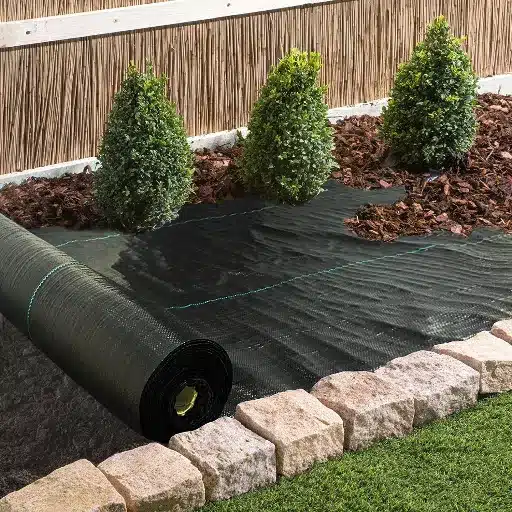
For me, when it comes to selecting a weed barrier essential considerations include those factors surrounding durability, permeability, and environmental friendliness. Essentially, I must choose a materials that lasts forever or is at least durable enough to allow water and nutrients into the soil, and that is preferentially biodegradable or at least eco-friendly.
Material Types: Fabric vs. Plastic vs. Organic
In choosing a weed barrier, the material type is on the balance between efficacy, environmental impact, and garden health. Below we have detailed the essential features, plus benefits and detractors, of fabric, plastic, and organic weed barriers:
🧵 Fabric Weed Barriers
The main qualities of fabric weed barriers include durability and permeability, depending on whether they are woven or non-woven polypropylene. Water, air, and nutrients are allowed through the fabric to enter the soil, which supports better plant growth but also suppresses weed growth. If anything, studies prove that there is about a 90 per cent reduction in weeds after some weed barrier tooling over several seasons. Their technically longer lifespan, from five to 15 years, relies heavily on the installation and maintenance phases for its consolidation.
Pros:
- 90% weed reduction
- 5-15 year lifespan
- Allows water/nutrient flow
Cons:
- UV degradation risk
- Potential microplastic pollution
🛡️ Plastic Weed Barriers
Plastic barrier to weeds gives a maximal solution of weed control because they completely block sunlight, some seed germination would otherwise be started. A sheet of black polyethylene film can be used in vegetable gardens or landscaping. According to weed control, plastic barriers are working more than 95%. Therefore, if kept from the excess, water retention in the soil could cause the poisoning of roots and therefore, must be able in other ways for water to drain.
Pros:
- 95%+ weed control
- Complete sunlight blockage
- Ideal for vegetables/landscaping
Cons:
- Root rot from water retention
- Microplastic breakdown
- Less biodegradable
Durability: Heavy Duty vs. Lightweight Options
| Feature | Heavy-Duty Options | Lightweight Options |
|---|---|---|
| Durability | 10-25 years | 1-3 years |
| Best For | Heavy foot traffic, large projects | Seasonal gardening, low weed pressure |
| Resistance | Tear & puncture resistant | Lower resistance |
| Cost | Higher initial investment | Lower price, easy handling |
Decision between heavy-duty and lightweight weed barriers hinges on the basis of durability and need of the garden. Heavy ones, like landscaping fabric of professional grade or thicker plastic sheeting, are made to take extreme conditions. These are highly tear and puncture resistant and therefore ideal for sites subjected to heavy foot traffic, large projects, or heavy weed growth. Heavy-duty weed barriers when installed and maintained properly can exist for 10-25 years depending on the type of material.
Lightweight options, by contrast, are thinner plastic films or organic barriers suitable for short-term use or places with little weed pressure. Because of their lower price and ease of handling during installation, the lightweight options wear out faster. Such a barrier will be usable for 1-3 years until replacement is needed and thus better suited for seasonal gardening or cases when long-term durability is not a priority.
Installation Tips for Long-Lasting Results
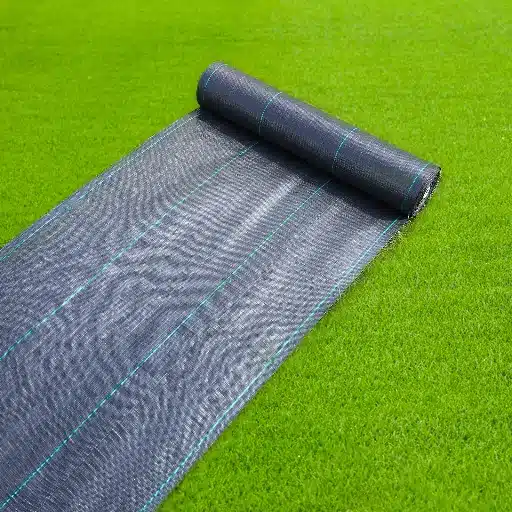
Long-lasting results should be obtained by laying the weed barrier on a clean and leveled surface before securing it with landscape staples to hold it firmly in place. Besides, overlap the edges and provide ample coverage to the plants so weeds cannot sneak through.
How to Use Landscape Fabric Properly
When used properly, landscape fabric stands for a long time in suppressing weeds and supporting the growth of healthy soil. Below, we have provided a stepwise procedure on how to get maximum benefit while working with landscape fabric across your garden:
Clear all the weeds, grass, and even rocks and other debris from the area. Level the soil off from any sharp erection that may puncture the fabric. You may consider adding compost or fertilizer for the soil before installation if needed.
Measure the area where you plan to install the fabric. Then, cut the fabric to size, allowing for a slight overlap of 6-12 inches wherever possible, to prevent weed growth through the gaps. For clean and precise cuts, use high-quality scissors specifically made for landscape fabric.
Unfold the fabric flat against the soil, with the shiny or textured side facing up if there is any. The edges and corners of the fabric need to be secured by staples or ground pegs about 12-18 inches apart to keep the fabric firmly anchored even in harsh weather.
If you’re planting through the fabric, use scissors or a utility knife to carefully create X-shaped slits where each plant will go. Fold the fabric flaps back, expose the soil, and set in your plants. This method allows for a clean and neat finish while maintaining the effectiveness of the barrier.
Best Practices When Laying Weed Barrier Fabric
Proper installation of weed barrier fabric is a must to have long-lasting results along with a healthy garden atmosphere in return. Here are some best practice tips, supported by recent research and prominent opinions:
🌱 Soil Preparation
Start by clearing the area of all weeds, roots, and debris. Smooth out the soil surface to eliminate bumps that can create gaps beneath the fabric. Studies suggest that properly prepared soil reduces the likelihood of weeds penetrating the barrier by up to 90%.
🧵 Selecting the Fabric Material
Far from being all created equal, some weed barriers require preference to the durable woven kind. Choose a fine-quality material that comes with UV protection and weighs around 5 ounces per square yard, which can serve upwards of 10 years even under tough conditions.
✂️ Cut and Secure
Unroll the fabric on the area you have marked before cutting it to size. Always make sure that overlaps are at least 6 inches because weeds may eventually sprout through thin gaps in-between. Use landscape staples to pin down the fabric thoroughly, putting one staple approximately every 12-18 inches.
🌿 Allow for Plant Growth
If planting, use a utility knife to cut X-shaped slits for each plant through the fabric. Studies show that keeping the slits as small as possible minimizes weeds better compared to larger cuts, thus allowing the plant roots to spread in a natural way.
Client Reviews and Expert Opinions
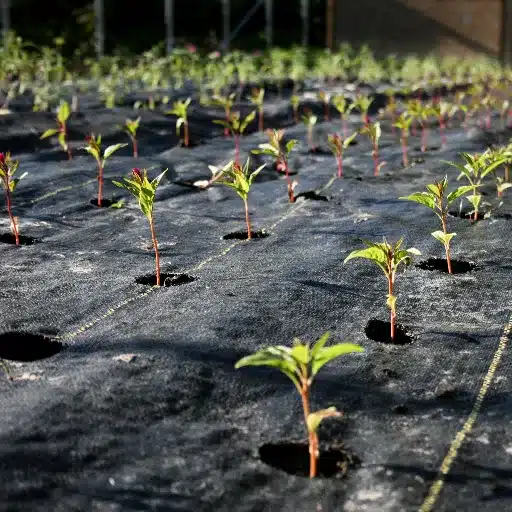
In hindsight, the use of top-notch weed barrier fabric coupled with the proper installation has always been a major factor. In my experience, if you should keep the barrier clean of debris and keep it tightly secured, this helps with a longer life span and maintains a neat and healthy garden.
⭐ Reviews of the Best Weed Barriers
The best weed barriers, according to users and experts, seem to fall upon a rather limited selection of options. The product most frequently recommended, of course, is that of a heavy-duty woven polypropylene weed barrier fabric. Recent testimonials mirrored the view that the fabric is well-made and can keep weeds away for the time span of 5 to 7 years upon proper installation; this is much longer than its lighter counterparts such as non-woven fabric or plastic sheeting which often fall into degradation and tears much sooner.
Featured Product: Dewitt Pro 5 Weed Barrier
Average rating across Amazon and Home Depot
Praised for permeability and durability by users and experts alike.
According to a comparative study published in 2023, UV-stabilized materials are ranked best in sun exposure resistance; hence, fabrics remain workable even in several climates.
📊 Research Findings
Recent research from gardening experts highlights the importance of fabric thickness:
- ✓ 3+ ounces per square yard: Consistently superior for weed suppression
- ✓ Water flow: Maintains optimal water flow to plants
- ✓ With mulch: 90%+ weed growth reduction when combined with mulch
💡 Tips from Experts to Gardeners
When weed control and soil health are on the table, a layered approach is recommended by experts for growing best results. Experts in gardening mention that top-quality weed barriers coupled with organic mulch significantly improve both weed inhibition and soil moisture retention.
Expert Recommendations:
- Mulch thickness: Apply 2-3 inches on top of fabric barrier
- Moisture retention: 25% reduction in evaporation during dry spells
- Securing method: Use U-shaped garden pins every 6 inches along edges
- Plant holes: Make precise, snug cuts around plant base
- Maintenance: Clear debris and replenish mulch annually
Reference Sources
-
Target – Weed Barrier Landscape Fabric
This source offers a variety of weed barrier fabrics from trusted brands, providing insights into different materials and sizes available for effective weed control and landscaping.
Visit Source -
Landscape Discount – Weed Control Fabric 101
This guide explains how to choose the best weed control fabric, including options like cardboard weed barriers for vegetable gardens. It provides practical advice for gardeners with specific needs like crop rotation.
Visit Source -
Garden Mats – A Weed Barrier That Works
This source highlights the benefits of high-quality woven polypropylene fabric for weed control, emphasizing durability and effectiveness. It also discusses the unique features of their product, such as sunlight management.
Visit Source
❓ Frequently Asked Questions (FAQs)
Typically, a weed control fabric is laid down on seeds in a vegetable garden to stop them from germinating and growing into weeds. Landscape fabric acts as a barrier while allowing water to seep through but blocks rays of the sun, keeping weeds below at bay. If you opt for a top-notch landscape fabric, it will drastically lower the use of weed killers and manual weeding.
Yes, heavy-duty landscape fabric is suitable for use on driveways since it should be setting up a good barrier for weeds not to break through with proper drainage. Driveway fabric is formulated such that it will bear the weight of vehicles and will prevent soil erosion; hence it is perfect for this purpose.
There are different types of landscape fabric, including woven and non-woven. Woven types of weed barriers tend to be plastic, therefore more durable; whereas non-woven are usually for light-duty cases. Each kind has its specific use, so the choice should be based on your garden needs.
To keep weeds out of a garden bed, one thing you can do is use a weed barrier landscape fabric that’s installed correctly. This involves laying the fabric around your plants and securing it in place with garden staples or landscape pins. This will block weeds already in place and prevent others from coming up while still permitting water and nutrients to penetrate into the soil below.
Yes, it is indeed an eco-friendly weed-control fabric! Made from materials that break down over time yet still suppress weeds effectively, these constitute a really good choice for any gardener trying to keep his or her approach to gardening green.
The longevity of a weed barrier varies with fabric type and environmental conditions. Heavy-duty woven barriers may last for several years, whereas thinner fabrics will require a replacement sooner owing to wear and tear. It is always best to check the manufacturer’s specifications for the particular fabric you choose.
🌱 Ready to Transform Your Garden?
Choose the right weed barrier fabric today and enjoy a beautiful, low-maintenance landscape for years to come!
Remember: Proper installation + Quality materials = Long-lasting results

